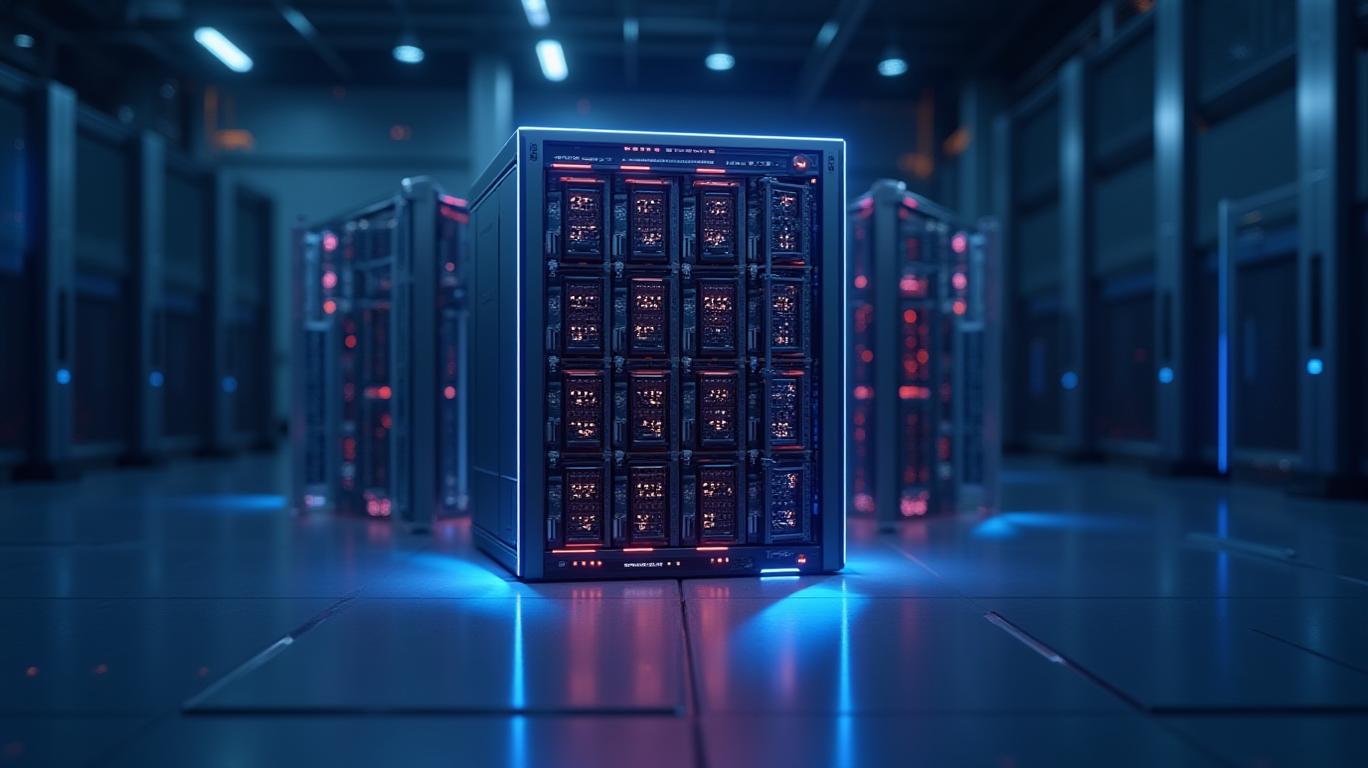Pure Storage's QLC Alliance with SK Hynix: A Scalable Play on the AI-Driven Storage Revolution
The hyperscale storage market is at an inflection point, driven by the insatiable demand for data-driven AI, HPC, and cloud workloads. Pure Storage's strategic partnership with SK Hynix to integrate QLC NAND technology isn't just an incremental upgrade—it's a blueprint for capturing the $60 billion hyperscale storage opportunity. By leveraging SK Hynix's QLC NAND and its own DirectFlash Module architecture, Pure is positioning itself to dominate a sector where performance, energy efficiency, and scalability are existential imperatives.

Technical Differentiation: The Triple Threat of QLC Integration
Hyperscalers face three critical bottlenecks: data velocity, energy costs, and physical space constraints. Pure's collaboration with SK Hynix directly addresses these through three pillars:
Ultrafast Performance: The FlashBlade//EXA platform, set for mid-2025 launch, delivers 10 TB/s read performance—a 3x improvement over HDD-based alternatives. This is critical for real-time AI training and HPC simulations, where latency is a dealbreaker.
Energy Efficiency: SK Hynix's QLC NAND reduces power consumption by 40% compared to prior-gen SSDs, slashing operational costs in data centers. For hyperscalers, this translates to a $100M+ annual savings at scale.
Density & Scalability: Pure's rack-dense DirectFlash Modules, combined with SK Hynix's high-density NAND, enable 10PB of storage in a 42U rack—50% denser than competing solutions. This eliminates the need for sprawling data center expansions.
These advancements are not merely incremental; they redefine the storage hierarchy, pushing HDDs and lower-tier SSDs into obsolescence for hyperscale applications.
Market Monetization: Capturing the AI/Data Center Surge
The hyperscale market is growing at 18% CAGR, fueled by AI adoption and cloud migration. Pure's Evergreen architecture—which guarantees perpetual upgrades without downtime—creates a moat against competitors like Dell and NetApp, whose legacy systems demand costly overhauls.
- AI/HPC Workloads: The FlashBlade//EXA's 10 TB/s throughput is tailored for AI training, where data velocity directly impacts model accuracy. Early pilots with cloud giants suggest this could command 20%+ premium pricing over generic storage.
- Security Synergy: The Varonis partnership adds AI-driven data governance, addressing hyperscalers' compliance concerns—a $12B market opportunity.
Financial Upside: Margin Resilience and TCO Dominance
Critics cite UBS's margin concerns—NAND prices could rise 10% in 2025—but Pure's partnership with SK Hynix mitigates this risk. Securing a dedicated QLC supply line allows bulk discounts, while its vertically integrated model (hardware + software) shields gross margins.
- TCO Leadership: Hyperscalers pay $0.005/GB/month for Pure's all-flash arrays versus $0.02/GB/month for HDDs. At petabyte scale, this creates a $50M+ annual advantage.
- Evercore's $60 Price Target: Supported by 25%+ revenue growth from hyperscale and AI segments, this valuation assumes a 30x P/E multiple—a reasonable premium for a leader in a high-growth market.
The Moat Against HDD/QLC Peers
Pure's competitive edge isn't just technical—it's ecosystem-driven:
- Evergreen's TCO Edge: Continuous upgrades eliminate forklift replacements, reducing capex by 40%.
- Hyperscaler Lock-In: Partnerships with SK Hynix and Micron (prior) create sticky supply chains, deterring competitors from matching scalability.
Conclusion: Act Now Before the Tipping Point
The hyperscale storage race is a winner-take-most game. Pure Storage's alliance with SK Hynix isn't just a product play—it's a strategic move to own the AI-driven data future. While UBS's margin concerns are valid, they're outweighed by the partnership's cost mitigation and the $20B+ addressable market in AI storage.
With a $18.14B market cap and Evercore's $60 price target, Pure is undervalued relative to its growth trajectory. Investors should act swiftly: once hyperscalers fully migrate to QLC-based all-flash arrays—projected by 2026—Pure's margins and valuation will surge. This is a buy now, profit later opportunity in a sector where leadership is won, not inherited.
The time to capitalize on this storage revolution is now.

Comments
No comments yet